A brother of a veterinarian was out for a jog when he stumbled upon a newly hatched songbird. It had fallen out of its nest. Unable to locate the nest so he could return the baby bird to it, he decided to take it home and gave it his vet brother to hand-raise it himself.
“Note: if you find a bird this young,” the veterinarian wrote on his imgur post, “it is best to try to locate the nest and put it back in. There is a myth that you can’t touch a baby bird, because the parents will reject it due to the smell of humans. PLEASE don’t try this at home! This is not meant as a guide, but more to show you the amazing development and growth of songbirds. Wildlife rehabilitation should only be carried out by those licensed to do so!”
Here’s the amazing story about their experience hand-raising the baby bird.
Day 1: Here’s the little chick on the first day.

imgur
Day 2: “We kept the chick in an incubator, carefully controlling the humidity and temperature. We decided she was a she (though we were never able to find out if it was male or female), and called her “Dumpling.” All baby birds look very similar, so we had no way to really know what kind of bird this was. We’d have to wait and see how she grew, and what her feathers looked like.”

imgur
Day 3: “Baby birds eat a lot! We fed this chick primarily with crickets, mealworms, waxworms, caught insects, and a commercially available liquid formula for chicks. We fed the chick every 30 minutes for 14 hours/day, simulating what she would get in the wild. Just imagine what that means! This was just one chick, and most songbird broods will have anywhere from 2 – 5 chicks. The amount of insects songbird parents need to catch to feed their chicks (and themselves) is a bit staggering when you think about it. Since the parents don’t feed their chicks overnight, we didn’t either. This is opposed to many mammalian babies that need to be fed regularly around the clock.”

imgur
Day 4: “You can see here the amazing development of the wing feathers in just a few days’ time. Also, she had a hilarious wispy mohawk of down feathers that got even more ridiculous when she got a little older. She would start squawking to be fed every 30-45 minutes. An interesting note: instincts are fascinating with these animals. Even with the poor coordination and closed eyes, this chick knew enough to back up to the edge of the nest we made for her and poop over the side, so as to not dirty the nest.”

imgur
Day 5: “By day 5, Dumpling was able to sit more “sternal” (on her chest with the legs tucked under her body) with more stability. Look at the changes in the feathers in just another 24 hours! She is actually starting to look like a bird! Her eyes were starting to open just a little bit by this time, as well.”
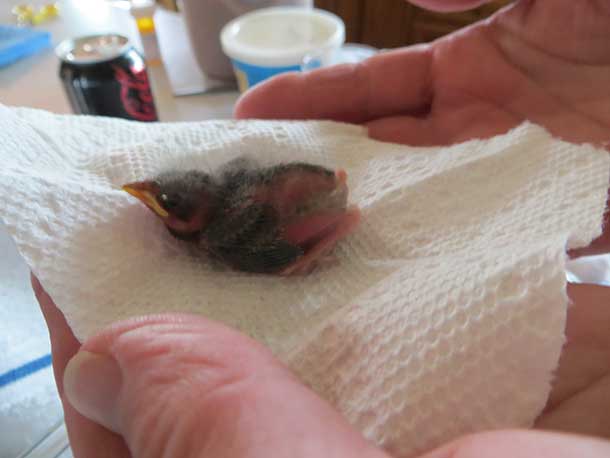
imgur
Day 6: “Here is a nice shot of the amazing continued development of her wing feathers. You can see them encased in a cornified sheath. Once the feather gets to its final size, this sheath disintegrates and the feather is allowed to spread open.”

imgur
Day 7: “Overnight, all of the feather sheaths fell away and -tada!- we have a bird! You can see here as well that she has a bent lateral toe on her left leg. Not much to be done about that in a bird this small, and it really didn’t slow her down at all.”

imgur
Day 8: “At this point, she was eating 3 large crickets +/- waxworms at every feeding. I’ll attempt to make a gif later from some video I have of her scarfing them down.”

imgur
Day 9: “By this time, we were able to stop using the incubator. Since her body was covered in feathers, she was able to regulate her body heat on her own. The tufts of chick fluff and the eternally grumpy expression that baby birds have was hilarious.”
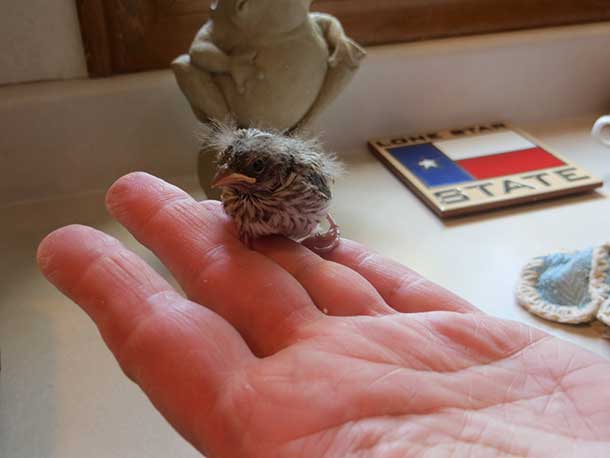
imgur
Day 10: “We moved her into more of a conventional cage, and gave her more materials to explore. She was really happy, despite her expression.”

imgur
Day 11: “She was able to officially perch for the first time! Definitely a big step in the right direction. She doesn’t have much of a tail yet, so her balance isn’t great, but she had a really strong grip and could hold herself up there very well, bad toe and all.”
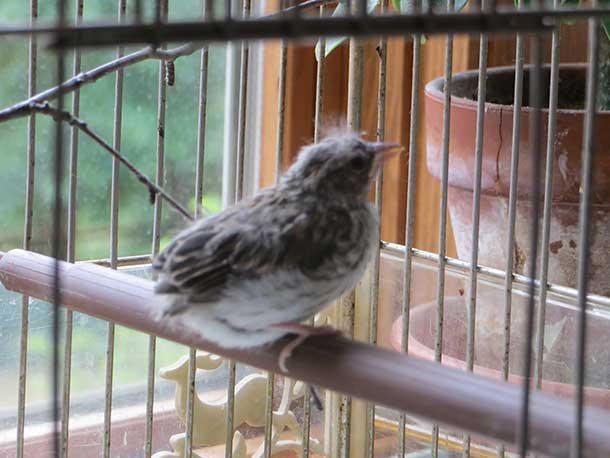
imgur
Day 12: “She was a very sweet little bird, and enjoyed perching on our hands, early on. You can see some sprouting millet seeds in the background, which we added to her diet to continue to increase the variety of food she was exposed to. By this point, we actually didn’t have to feed her as often. We would hand feed her every 1-2 hours, and place worms in the cage for her to forage for in between times.”
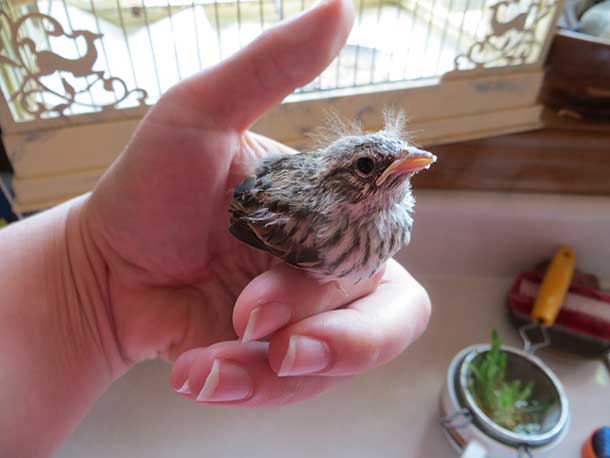
imgur
Day 13: “Almost 2 weeks from hatching, and she is now perching very well! You can see that her strength and balance has improved even compared to Day 11. Her legs are more upright, showing a better perching posture. This “hocks up” posture is very characteristic of 14-day old songbird chicks, so she is right on schedule.”
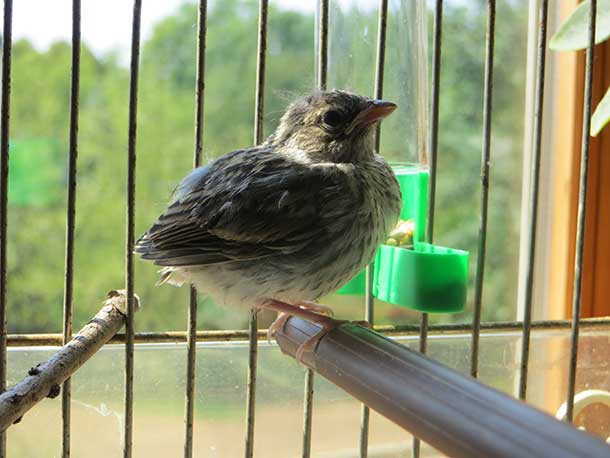
imgur
Day 14: “She is starting to look more mature. That hilarious baby down is disappearing. Now that she is over 2 weeks old, I’ll start skipping days.”

imgur
Day 17: Here she is in a larger cage that she graduated to. We put in freshly cut branches so she can have a variety of perching options, and can explore the leaves and twigs like she would in the wild. “By this point, she is hopping and flying around the cage like a professional. **NOTE** Any of you with pet birds, it is very important to have a variety of perches. The best ones are branches you cut yourself from non-toxic trees. It’s great, healthy enrichment for your pets!”
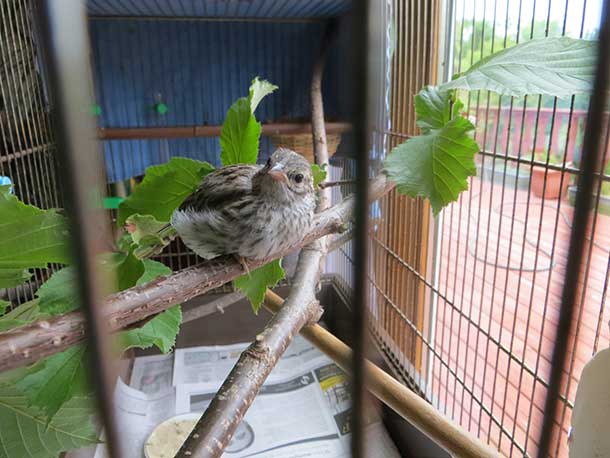
imgur
Day 22: “We started placing her cage out on the deck to get her exposed to the wind, the sun and other birds. This is important for socialization and training. Other birds would come to the feeders and interact with her, and she could watch them and learn their songs.”

imgur
Day 23: “This is one of my favorite pictures of her, showing her wonderfully patterned feathers. By this point, we decided she was likely a White Crowned Sparrow or Chipping Sparrow. WCS is a species of bird that is common around here, but you don’t see them often because they don’t come to bird feeders regularly. Chipping Sparrows are very common, but there were a few pictures of juveniles that didn’t match well with her. Both are a migratory species, traveling south for the winter. We were hoping to get her fit for release in plenty of time to make that trip.

imgur
Day 25: “Another lovely side view of her, showing her feather patterning. It provides for great camouflage as they flit among the trees.”
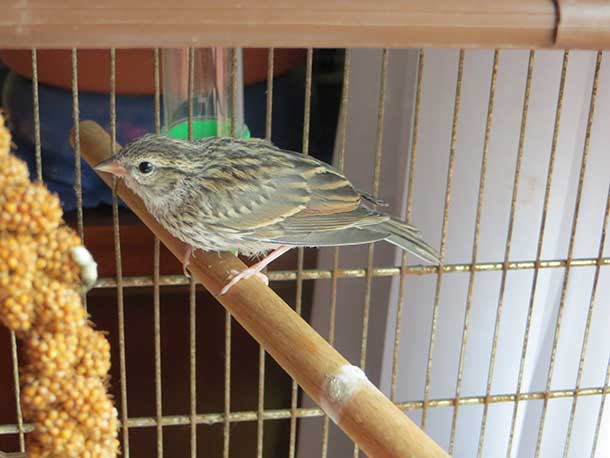
imgur
Day 27: “By this time, she was completely off of eating crickets (showed absolutely no interest in them), and her diet was more seed and worm-based. She was also eating on her own, completely. She actually didn’t let us feed her anymore, which was a good sign.”

imgur
Day 29: “She loved all of the new leafy branches we’d put in for her. A large part of their diet in the wild is tree buds, and she’d go after those immediately whenever we put fresh branches in for her.”
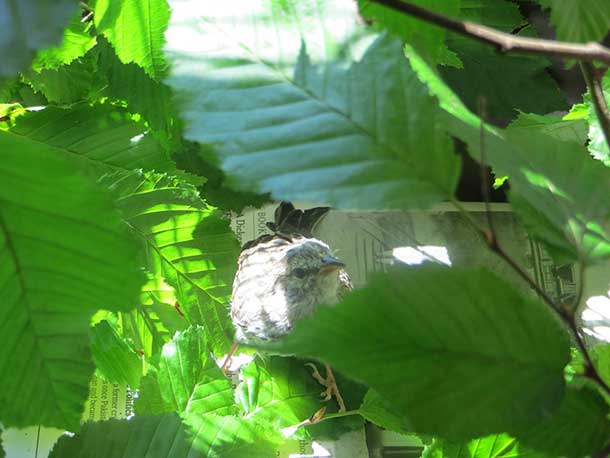
imgur
Day 33: “At this point, she was essentially releasable. However, there were some expected storms rolling in over the next few days, so we decided to keep her for a few days longer to give her the best chance.”
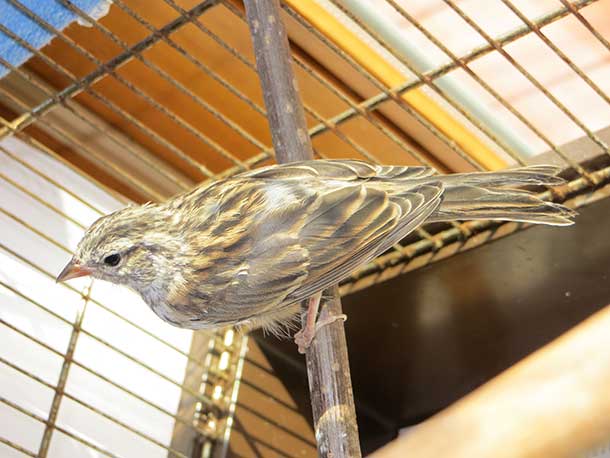
imgur
Day 36: “… the perfect day to send her on her way! We drove to a nearby nature preserve about a mile from where she was initially found and where we knew there to be others of her kind.”
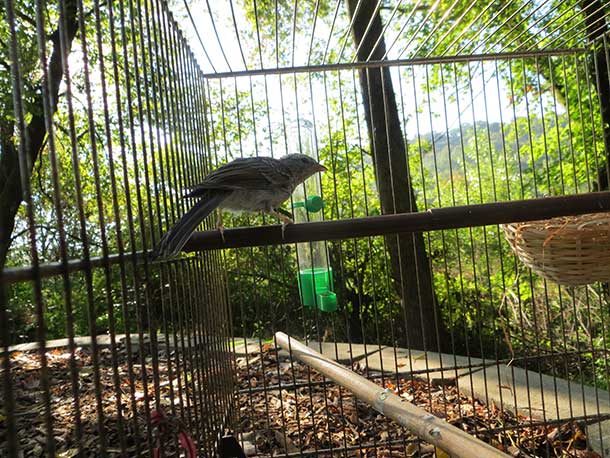
imgur
“Bye Bye, Dumpling!”
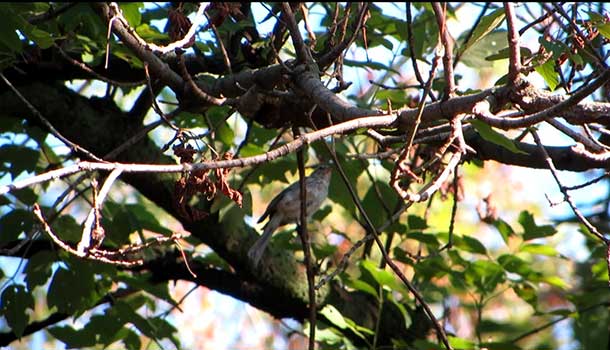
imgur
(Credit: DachsUndDachshund | Imgur)
What a beautiful story! Yet again, as the vet stressed strongly that this is something we shouldn’t try to do at home. The best way to go when you stumble upon a helpless creature like the baby bird is to seek the help of a local wildlife rehabber or veterinarian.

